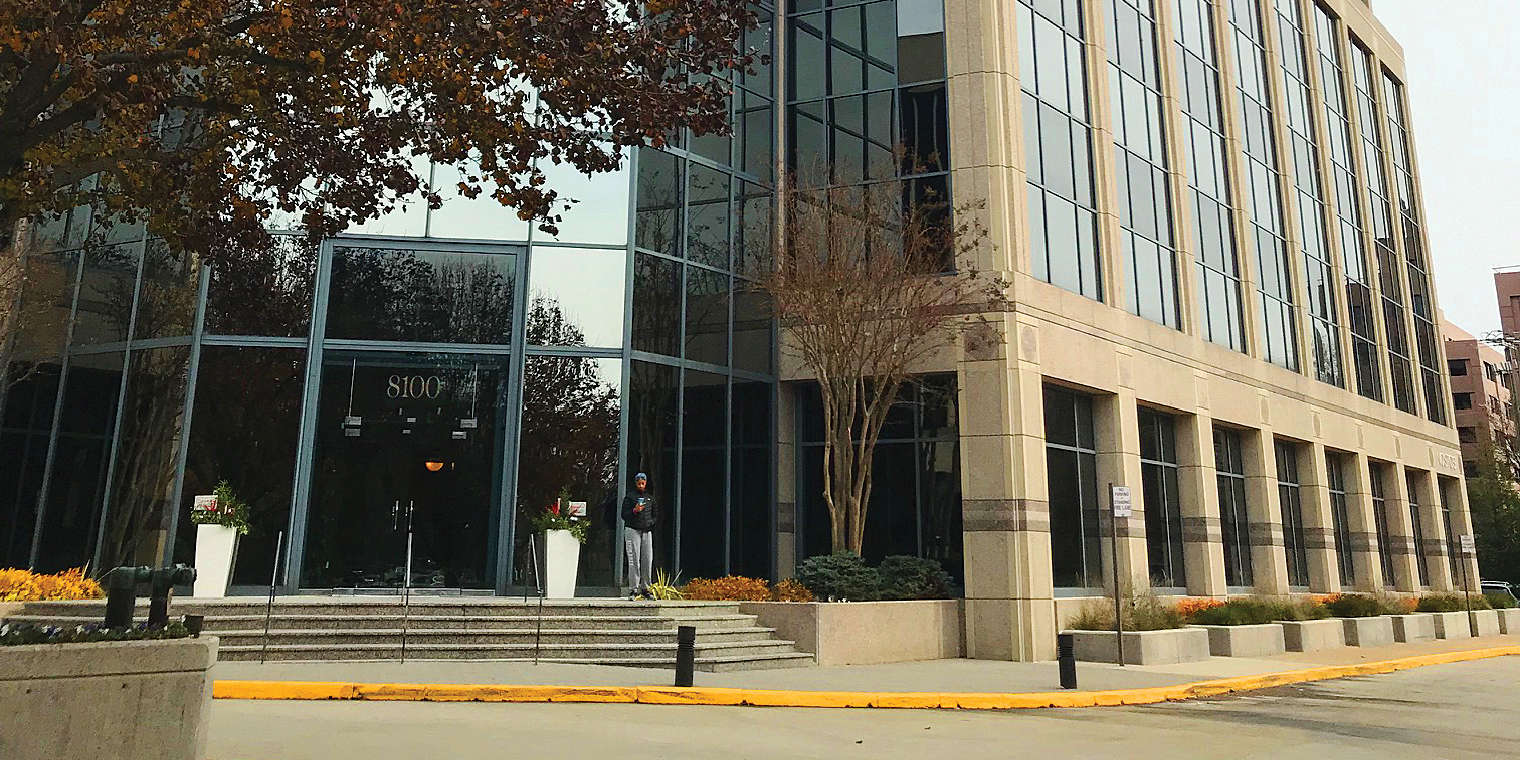The origin of Tyson’s Corner at the epicenter of the internet dates back to the Civil War when the Union took advantage of the heightened elevation (Tyson’s is among the highest points in Fairfax) to construct a lookout tower. The army took timber from nearby farms for its construction. A century later, the US military would use the elevation advantage to build a radio tower in the same space for sending and transmitting messages during the Cold War. This satellite tower, decked in white and red, can still be seen today at the intersection of Chain Bridge Road and Leesburg Pike adjacent to the water tower.
However, the birth of the internet as we know it occurred in a far less conspicuous segment of the landscape: An office building at 8100 Boone Boulevard that is now obscured by a McDonald’s. At one point 25 years ago, half the internet’s traffic ran through there.
In the early ‘90s, the connection of computers to one another in an intranet configuration was relatively common but leveraging that technology towards a world-wide reach was a different matter. At the time, those pathways were strictly regulated by the government and only used by a select few: Mostly the academic world, selected scientific communities, and sectors of the government and military.
The problem was mainly that of infrastructure which was, again, controlled by the government (specifically the National Science Foundation). Steven Feldman, who had worked linking networks for a company called MFS Datanet, had to use existing phone lines. When he worked in Northern Virginia, Feldman and some colleagues from competing companies—including MFS’s former landlord Sprint—decided to join forces to create their own infrastructure using the tower nearby.
Tech writer Andrew Blum wrote in his book “Tubes”:
“Each of these networks operated independently, but they knew full well that they were useless without one another…The growth trend was clear: for the good of the internet—really if there was to be a functioning nonacademic internet at all—the networks had to act as one. “
The business partners created Metropolitan Area East. The new platform got a boost from a 1991 Congressional initiative called the “High Performance Computing and Communication Act” which was created amidst in internet arms race with other electronics superpowers such as Japan. The bill acknowledged the need to transfer the development of the internet from government to industry and set forth steps to strengthen the existing infrastructure.
A year after being constructed in 1993, MFS got the funding and expanded with data nodes in suburban Philadelphia, San Francisco and Chicago. Despite covering a huge share of the world’s circulated information, the operation managed until 1996 in just one floor of the 8100 Boone Boulevard. However, the increasing spatial demands of cramming so many fiber cables started to become too much. The operation moved next door into a control center carved out of a parking garage in 1919 Gallows Road.
MAE-East closed off to new customers in 1998 and the original mainframe was shut down in 2001. In 2009, many of the original service providers (including AT&T) migrated to a competing firm in Ashburn.
Some sources such as the Internet Exchange Map suggests MAE-East is, in fact, no longer an active part of the internet’s existence. At the same time, MAE-East’s growth must be partially credited with Tyson’s Corner’s status as one of the largest economic hubs in the country.
Meanwhile, the senator who proposed the 1991 Act that gave MAE-East its leg up in the market and its ability to put Tyson’s on the map, was none other than Al Gore. While his role in the bill (dubbed “the Gore Bill”) would lead to backlash of exaggeration in his presidential campaign nine years later, it’s difficult to think of any lawmaker who did more to realize the internet’s potential. Much of his time in the Senate would be spent pushing forth technocratic legislation and while he didn’t coin the term superhighway, he would popularize it in the early 90s.
Pictured at top: 8100 Boone Blvd






